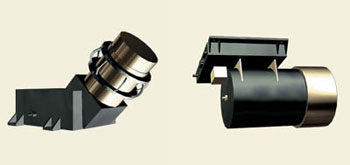
You are here
IES

Copyright ESA/AOES medialab
The Ion and Electron Sensor (IES) is designed to characterise the forces that drive the development of the comet's coma. The IES instrument has a significant advantage over previous attempt to characterise the coma as these previous studies have been based on flybys, providing only a brief snapshot, while IES has several months in order to make its measurements.
IES provides complementary data to ALICE and MIRO. While the latter two instruments analyse uncharged particles in the comet's coma, IES analyses particles that have been ionised by the solar wind. It is also observing the formation of layers within the coma. The instrument has already been used in flybys of (21) Lutetia, (2867) Steins and Mars.
In order to make its measurements, the IES needs to be in a position for the particles to strike the detector. In total the instrument weighs 7 kg and uses power equivalent to less than a quarter of what is required by a lightbulb.
For further information visit:
Contact us
Any media enquiries should be directed using the links below:
The Open University
Science and Technology Facilities Council
jake.gilmore@stfc.ac.uk
http://www.stfc.ac.uk/mediaroom